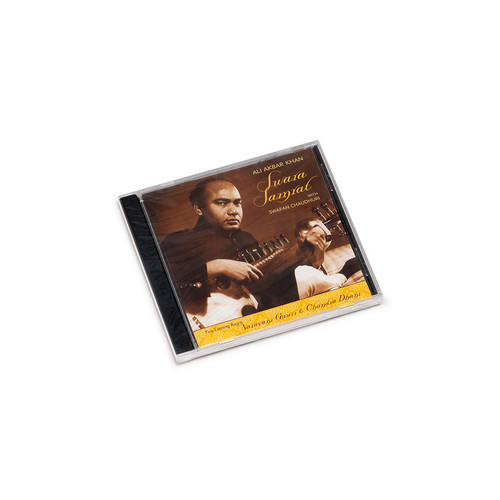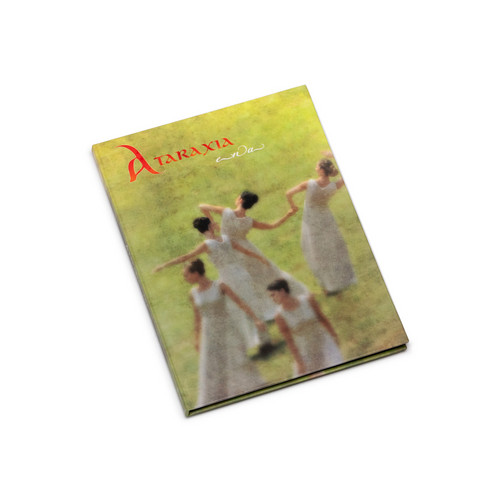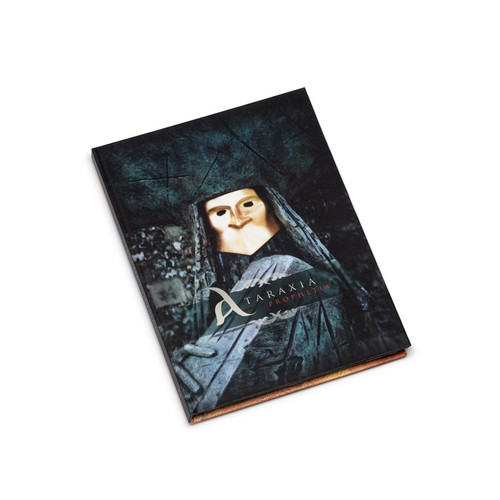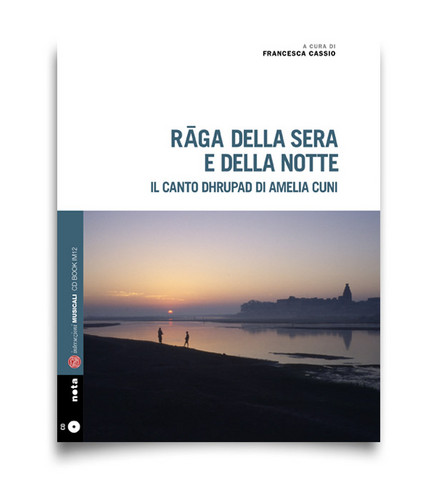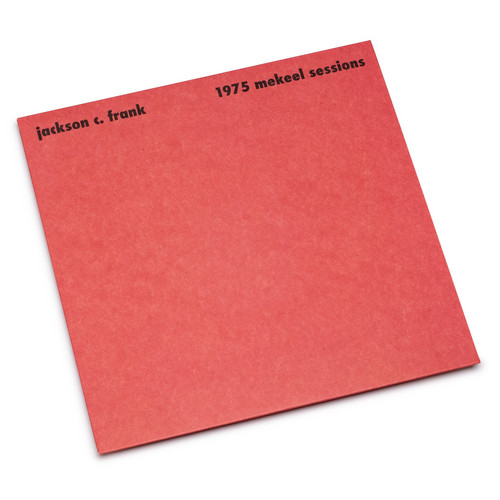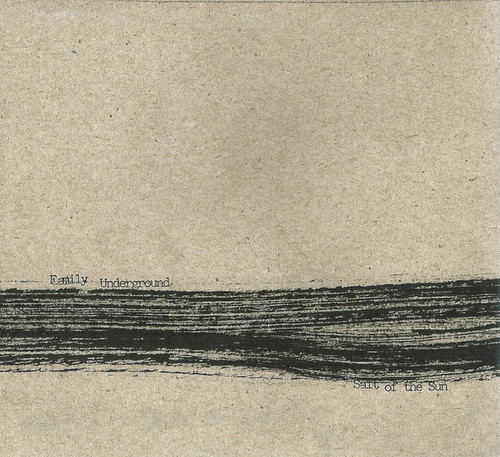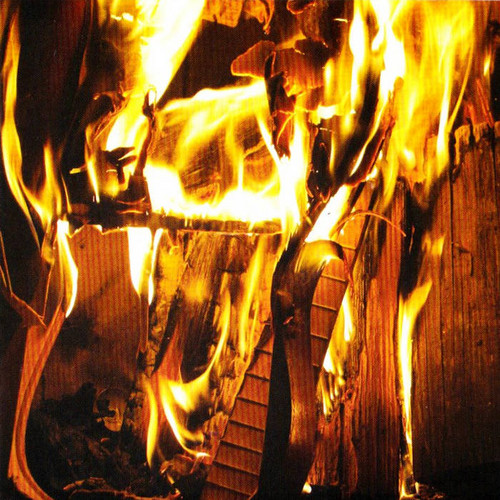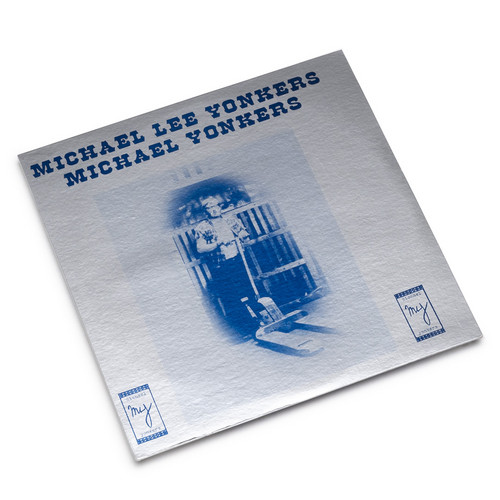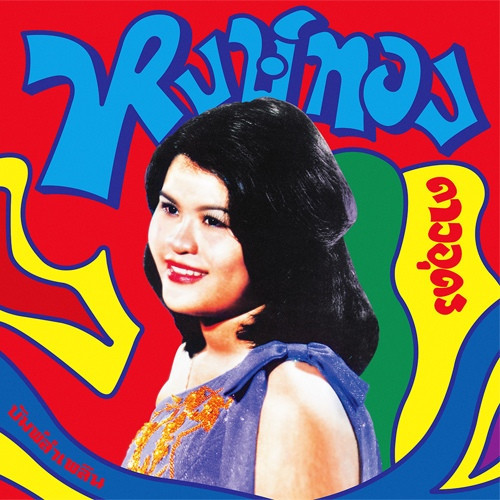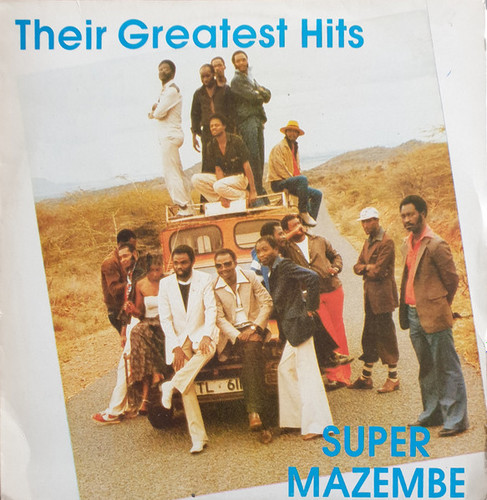Folk /
Swara Samrat
*2025 stock* The master of Hindustani classical music, Ali Akbar Khan, unveils Swara Samrat, a unique and captivating album that showcases his extraordinary talent on the sarod, a traditional lute-like instrument from Northern India. This album features new recordings that reflect Khan’s deep mastery of melody and rhythm, embodying his title "Swara Samrat," which means "Emperor of Melody," a prestigious title bestowed upon him by his father late in life as a mark of respect and recognition for h…
Plays Alap - A Sarod Solo
*2025 stock* Ustad Ali Akbar Khan's "Plays Alap - A Sarod Solo" CD, released in 1997, offers an exquisite journey into the heart of Indian classical music through the profound solo sarod performance of the legendary maestro. This album presents the alap—the soul-stirring, unaccompanied melodic exploration that introduces a raga—showcasing Khan's unparalleled command of the sarod and his deep musical expression. A timeless recording, it invites listeners to immerse themselves in the intricate and…
Rag Darbari Kanada - 1969 (The 80 Minute Raga)
*2025 stock* Experience the timeless artistry of Maestro Ali Akbar Khan, the legendary sarod virtuoso, in collaboration with the eminent tabla maestro Pandit Mahapurush Misra in the iconic recording "Rag Darbari Kanada - 1969 (The 80 Minute Raga)." Originally recorded live and released as a double LP by The Connoisseur Society in 1969, this album captures an extraordinary 80-minute performance of the classical Indian raga Darbari Kanada.
This recording showcases the deep emotional depth and intr…
The Jewels Of Maihar
*2025 stock* The Jewels Of Maihar is a captivating album by the legendary sarod maestro Ali Akbar Khan, originally recorded in the 1960s-70s and released in 1995. It features classical Indian ragas Darbari Todi and Bhupali Todi, celebrated for their majestic and spiritual moods, performed with traditional accompaniment including tabla by Mahapurush Misra. This album is part of a revered series showcasing the rich heritage of Maihar gharana music and exemplifies Ali Akbar Khan's profound mastery …
Spasms (Sous La Coupole Spleenétique Du Ciel)
3 years after their last masterpiece "Llyr" on Prikosnovenie, Ataraxia return with absolutely new opus "Spasm" on Infinite fog. CD with 12 pages booklet. "Is this the bitter-sweet side of ourselves. We portray great misery, of course, and a typically human desperate need of survival but, at the same time, joke and irony are always present to exorcise the fear of decay and death. Here we are just musicians playing airs that make you dance and cry at the same time, and while doing this we say to o…
Ena
Ena (one = unity in Greek) is our musical contribution to overcome duality, conflicts and separation trying to go towards a resonant, open-hearted attitude. What we seed in our life, in others’ lives, on the earth is what we receive. We are One, separation causes blindness and destruction. WE ARE ONE, WE ALL ARE CONNECTED. Vibration is the very first act of creation, Music has the duty and the right to work on connection being such a suitable and direct channel to express harmony.
If our life i…
Prophetia
The very first tape Prophetia (1990) released on CD by Infinite Fog Productions. To celebrate this album, in 2017 Ataraxia have recorded three exclusive tracks (written in 1989/1992) never released before. These old but new tracks keep the spirit of the 90ies with a nowadays feeling. Nicolas Ramain took care of the layout and design. Thanks Nick for the album cover as well! The picture is by Mick Mercer.
- DELUXE LIMITED EDITION - 2CD A5 Digibook including a huge number of pages with exclusive…
Yanti Bersaudara
Sought-after eponymous Indonesian album by the Yanti Bersaudara (which means the Yanti sisters: Yani, Tina & Lin Hardjakusumah), released in 1971 and reissued for the first time. It is a very spiritual and magical Sunda album with haunting vibes based on a unique, creative and strong Sundanese cultural heritage. Active only for less than a decade (from the 1960s until the early 1970s), the three sisters originally from Bandung (West Java) sang traditional sundanese songs with beautiful voices & …
Africa Shangazi: More Early 1980s Benga & Rumba from East Africa
*The LP also comes with a free CD featuring additional material* This album is a compilation of hard-to-find 7" singles released in Kenya by the Audio Productions stable in the first half of the 1980s and most have never been released outside of East Africa. Amongst others, it features artists such as Super Wanyika, led by the legendary vocalist Issa Juma, originally from Tanzania, who played a pivotal role in the Kenyan club scene in the late 1970s and early 1980s. Also featured is Orchestra Sh…
Banyen Rakkaen
An exciting collection from pioneering Thai molam idol Banyen Rakkaen, featuring her most thrilling performances from the early to mid-70s, with innovative genre-bending arrangements and production from Thepphabut Satirodchomphu. These tracks, all originally released on 7-inch vinyl, showcase her powerful yet alluring voice, revolutionary yet rooted in tradition. Her exciting performance style was revolutionary and shocked traditionalists, but none could dispute the fact that she was a truly gif…
Rāga della sera e della notte – Evening and Night Rāgas (Book + CD)
*Bilingual book in English and Italian* Singer and composer Amelia Cuni (1958-2024) was the first European woman to pursue a professional career in the male-dominated field of dhrupad, a music genre rooted in the temple and court traditions of pre-modern South Asia. Cuni’s pioneering work not only continues to inspire generations of Westerners but also gave dhrupad a contemporary orientation, also influenced by her experiences with avant-garde music. This CD book is a sonic and written tribute t…
1975 Mekeel Sessions
For years, Jackson C. Frank was as ghostly a legend as they come. Even the relatively few record collectors who revered his work were only aware of the lone LP released during his lifetime. For all most listeners knew, Frank made an incredible album in 1965 and then vanished, despite that record having been produced by Paul Simon.
1975 Mekeel Sessions features six tracks recorded in the mid-'70s at a studio in Lake Hill, New York about five miles from Woodstock where Frank was living at the time…
Salt Of The Sun
2007 release “New minimal full-length album from Family Underground that abandons the drug-hit-sally-inside feel of early Velvets jags for the sound of the last gasp of Lou Reed’s long-suffering amp in the final seconds of ‘Black Angel’s Death Song’ extended to oblivion. Comes in a fold-out four panel digipak.”
Neverending Blues
2008 release "According to Indian mythology everything was born and will be born with vibration, sound. What Western civilization calls music, is narrow, nothing but strictly controlled thread in that vibrating area. Other kind of threads have been mastered elsewhere. Inevitably these threads will also face each other and become one. Basic note chimes in blues, raga and mantra. I dreamt of musics and players who can modulate with music, no matter which cultural background they come from – I felt…
Michael Lee Yonkers
2025 stock "Limited restock, last copies... An original sealed pressing of Michael Yonkers's Michael Lee Yonkers from 1974. Self-recorded in 1971 and '72, Michael Lee Yonkers has often been referred to as Michael's "country" album. It is many folks' favorite of his early works, and is likely the weirdest. The roughhewn quality of these recordings has caused listeners to make comparisons with other "real people" outsiders like Grudzien and the Holy Modal Rounders, but there are more obvious, well…
Bump Lam Phloen: Essential Hongthong Dao-udon
How can we explain the power of music? How can songs delivered in a language which we don't understand move us so? This collection contains the very best songs from Hongthong Dao-udon, one of the great Thai singers of the "third generation" of Molam singers, one of the artists who succeeded in fusing Molam with Luk Thung, thus triggering a new generation of singers; in fact she was the first to sing both genres from the beginning of her career, considering herself to be situated happily between …
Never Forget Me
Never Forget Me is the second release on EM Records from Angkanang Kunchai, one of the greatest Thai singers; the original 1979 vinyl release, now extremely rare, was a collection of her self-produced songs, backed by her own band. This radically independent stance, though admirable, caused the album to languish in relative obscurity, due to her lack of support from the business masters of the Thai music scene of the time. "Never Forget Me" is a plea to her fans, and although the original album …
Their Greatest Hits
Super Mazembe's "Greatest Hits," serves as a definitive collection celebrating the band's remarkable contributions to East African music. Released in 1986, this compilation features a carefully curated selection of the band's most iconic tracks, encapsulating their vibrant sound and the infectious energy that made them a household name. Highlights include fan favorites like "Shauri Yako" and "Kasongo" each track showcasing the band's skillful musicianship and unique ability to blend traditional…
Angkhanang Khunchai & The Ubon Phatthana Band
Born in the province of Ubon Ratchathani in Isan (the northeastern region of Thailand), Angkhanang Khunchai was a young female prodigy who emerged on the molam scene, and became one of the first generation of molam performers who were able to "sing" popular music. From an early age she was mentored by renowned national molam artist Chawiwan Damnoen, and in her mid-teens joined the legendary musical troupe the Ubon Phatthana Band as the lead vocalist.
In 1971 at the age of 16 she released a singl…
The Essential Doi Inthanon : Classic Isan Pops From The 70s - 80s
A revered figure in his native Isan region, and indeed throughout Thailand, Doi Inthanon is a legendary composer, producer, visionary and talent-spotter, a man who combines business acumen with an unerring ability to both predict and engender new directions in Thai popular music. Fittingly naming himself after the tallest mountain in the nation, he has towered over Thai music since the early 70s, and is still active today. This compilation, the first "various artists" collection in the EM Record…
